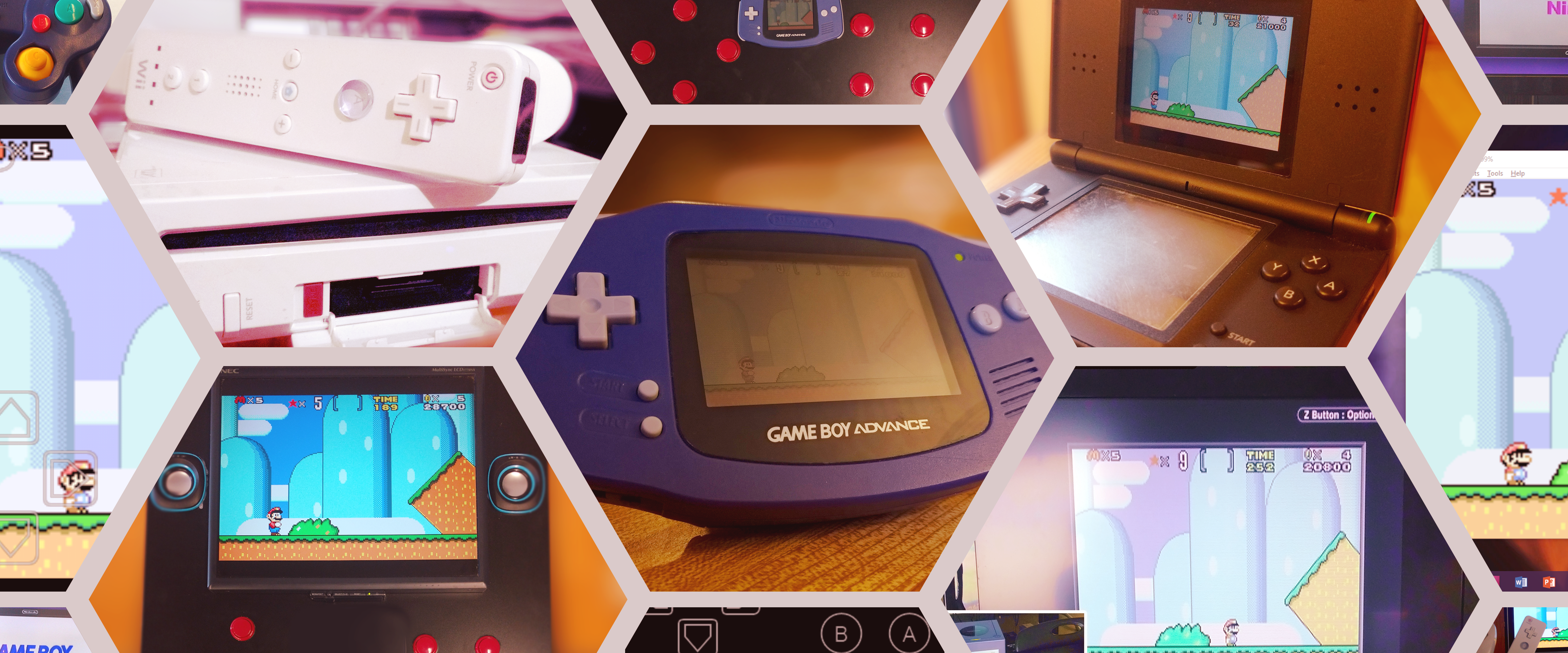The Archive(d) Game: Notes on the Preservation, Nostalgia, and Embodied Experience of the Game Boy Advance
In my last probe, I argued that a meaningful study of a video game platform as both an artifact and a cultural object demands that its emulators be taken into account. The isolation of hardware or software from its afterlives renders invisible the relationships between media platforms, the bodies of their impossible, ideal users, and the cultural context in which the object is engaged with. The following videos continue the work of that probe in archiving the materiality and embodied experience of playing on the Game Boy Advance and the various platforms and emulators that—sanctioned or otherwise—permit one to play its games. Although the videos are regrettably low quality due to various technological barriers, they nevertheless demonstrate how technology shifts to adapt to various social, cultural, and economic factors. By comparing the material, embodied gameplay experience, we encounter a much larger network than is visible by studying the Game Boy Advance as an isolated object.
The Game Boy Advance is a horizontally-oriented console, unlike it’s predecessors the Game Boy and the Game Boy Colour. Direction, start and select buttons are to the left of the screen, and A and B to the right. The handheld weighs approximately 136 grams, around 200 with the two double A batteries. The technical specifications of the Game Boy Advance locate it as an immensely portable console for its time, but the cost of carrying the entire platform in one small object is its processing power and display quality
The Game Boy Player is a nifty add on for the Game Cube that allows one to play Game Boy, Game Boy Colour, and Game Boy Advance cartridges off a television. It connects to the high-speed parallel port at the bottom of the Game Cube and requires a boot disk to access the hardware. The Player doesn’t use software emulation as one might expect but rather physical hardware nearly identical to the GBA’s.
The Nintendo DS Lite is the second console in the Dual Screen series. This one is brighter and more lightweight than the original, but still retains Game Boy Advance backwards compatibility, unlike its successors. The console comes with a removable cover for the game pak slot for added protection from dust and other foreign materials. GBA games display on the backlit, 3.12 inch transmissive TFT colour LCD, not the touch screen below.
The Nintendo Wii is one of the easiest and most efficient consoles to mod, offering the ability not only to backup Wii and Gamecube Games, but also to experience second, third, and fourth generation systems. Once the homebrew channel is installed and accessible from the Wii menu, emulators can be added to an SD card, along with the ROMs. In this case, we’re running Visual Boy Advance GX, a version of VBA for the Wii homebrew channel. This particular console was modded in the Residual Media Depot, while following precise instructions so as not to brick the Wii and render it unusable.
Game Boy Advance games can be emulated on a Windows PC most easily with the VisualBoy Advance emulator, the shortcut for which is represented by a purple Game Boy Advance icon. ROM files are accessed directly from your computer through the file-open tab. The emulator will automatically save .SAV files as well as any save states in the same directory you open your game from. Input can be configured based on the player’s preferences, but default settings map directions to the arrow keys, making it the only platform where the right hand controls movement.
The MyBoy!Free app is, as its name suggests, a free Game Boy Advance emulator for Android. The emulator has two default orientations. The first is a portrait mode with the 4:3 aspect display above a black background. The second is a landscape mode that stretches the display to 16:9 aspect and overlays it with the controls. Haptic feedback is controlled by the phone itself and, depending on the phone’s support for multi-touch input, some games may be incompatible. Luckily, most new phones have full touch support.
This arcade table, which lives in the Residual Media Depot, was built in May 2017 during the media archaeology summer course as a joint project between our class and Ann Louise Davidson’s work on maker culture. The arcade table runs off a raspberry pi, which usually hides inside the cardboard-filled table. This particular table was modeled after the Game Boy Advance/GBA emulators.

